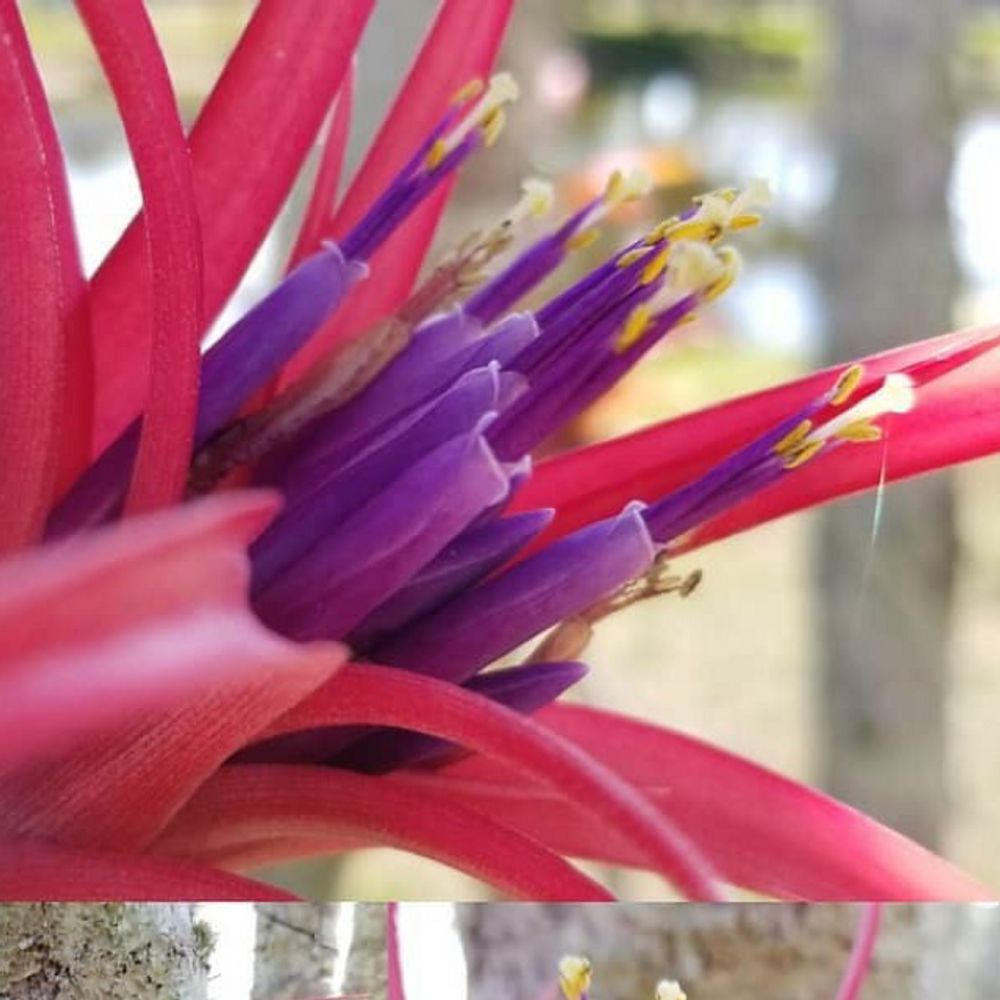Airplant
(Tillandsia ionantha ionantha)

Description
Tillandsia ionantha is a species of epiphytic air plant native to Central America and Mexico. It belongs to the bromeliad family and is also commonly known as the Sky Plant or the Blushing Bride. This plant is unique because it does not require soil to grow and can thrive in a wide range of environments. In this article, we will explore the various aspects of Tillandsia ionantha, including its characteristics, care requirements, propagation, and potential uses. Taxonomy and Botanical Description Tillandsia ionantha belongs to the Bromeliaceae family, which is a large family of flowering plants that are mostly native to tropical America. The genus Tillandsia contains around 650 species of epiphytic plants, which means that they grow on other plants or objects without taking nutrients from them. They obtain their nutrients from the air, water, and debris that accumulates around them. Tillandsia ionantha is a small, compact plant that grows to a height of around 3-5 cm (1.2-2 inches) and a width of 5-7 cm (2-2.8 inches). The leaves are thin and narrow, with a silvery-green color, and are covered with fine, white scales that help to protect the plant from moisture loss. The leaves grow in a rosette formation, which means that they form a circular pattern around the center of the plant. The flowers of Tillandsia ionantha are small, tubular, and are arranged in clusters that emerge from the center of the plant. They are typically pink, red, or purple in color and have a sweet, delicate fragrance. Distribution and Habitat Tillandsia ionantha is native to Mexico, Guatemala, Belize, Honduras, El Salvador, Nicaragua, and Costa Rica. It grows in a variety of habitats, including dry forests, cloud forests, and mountainous regions. It is also found growing on rocks, tree trunks, and other objects in both sunny and shaded locations. Care Requirements Tillandsia ionantha is a relatively low-maintenance plant that is easy to care for. However, it does have specific requirements that need to be met for it to thrive. Light Tillandsia ionantha requires bright, indirect light to grow properly. It can tolerate some direct sunlight, but too much can damage the leaves and cause them to burn. A south-facing window or a location with bright, filtered light is ideal. Water As an epiphyte, Tillandsia ionantha does not require soil to grow. Instead, it obtains its nutrients and moisture from the air. It is important to mist the plant regularly with clean, tepid water to provide it with the moisture it needs. Alternatively, you can soak the plant in water for 10-20 minutes once a week to ensure that it receives enough moisture. After soaking, shake off any excess water and allow the plant to dry completely before returning it to its display location. Temperature and Humidity Tillandsia ionantha is a tropical plant that requires a warm, humid environment to thrive. It can tolerate temperatures between 10°C and 32°C (50°F and 90°F), but it prefers temperatures between 18°C and 24°C (65°F and 75°F). To maintain humidity levels around the plant, you can place a tray of water near it, or use a humidifier. Fertilizer Tillandsia ionantha does not require fertilizer, but you can add a weak solution of liquid fertilizer to the water you use for soaking or misting once a month during the growing season. Propagation Tillandsia ionantha can be easily propagated by removing the offsets or "pups" that emerge from the base of the parent plant. Here are the steps to propagate Tillandsia ionantha: Identify the offsets: Look for small, new plants that are growing from the base of the parent plant. The pups will have their own set of roots and a few leaves. Remove the offset: Gently twist or pull the pup away from the parent plant. Use a sharp, clean pair of scissors or a knife if the pup is difficult to remove. Allow the pup to dry: After removing the pup, place it in a dry, shaded location for a few days to allow it to dry and heal any wounds. Plant the pup: Once the pup is dry, it can be planted in a new location. Tillandsia ionantha can be planted in a variety of ways, including mounting it on a piece of wood or other object, placing it in a decorative container filled with moss or rocks, or attaching it to a wire frame. Water the pup: After planting, mist the pup with clean, tepid water or soak it for 10-20 minutes to provide it with moisture. Be careful not to over-water the pup, as this can cause it to rot. Provide proper care: Continue to care for the pup as you would the parent plant, providing it with bright, indirect light, regular misting or soaking, and a warm, humid environment. With proper care, the pup will grow into a mature Tillandsia ionantha plant over time.
Taxonomic tree:







